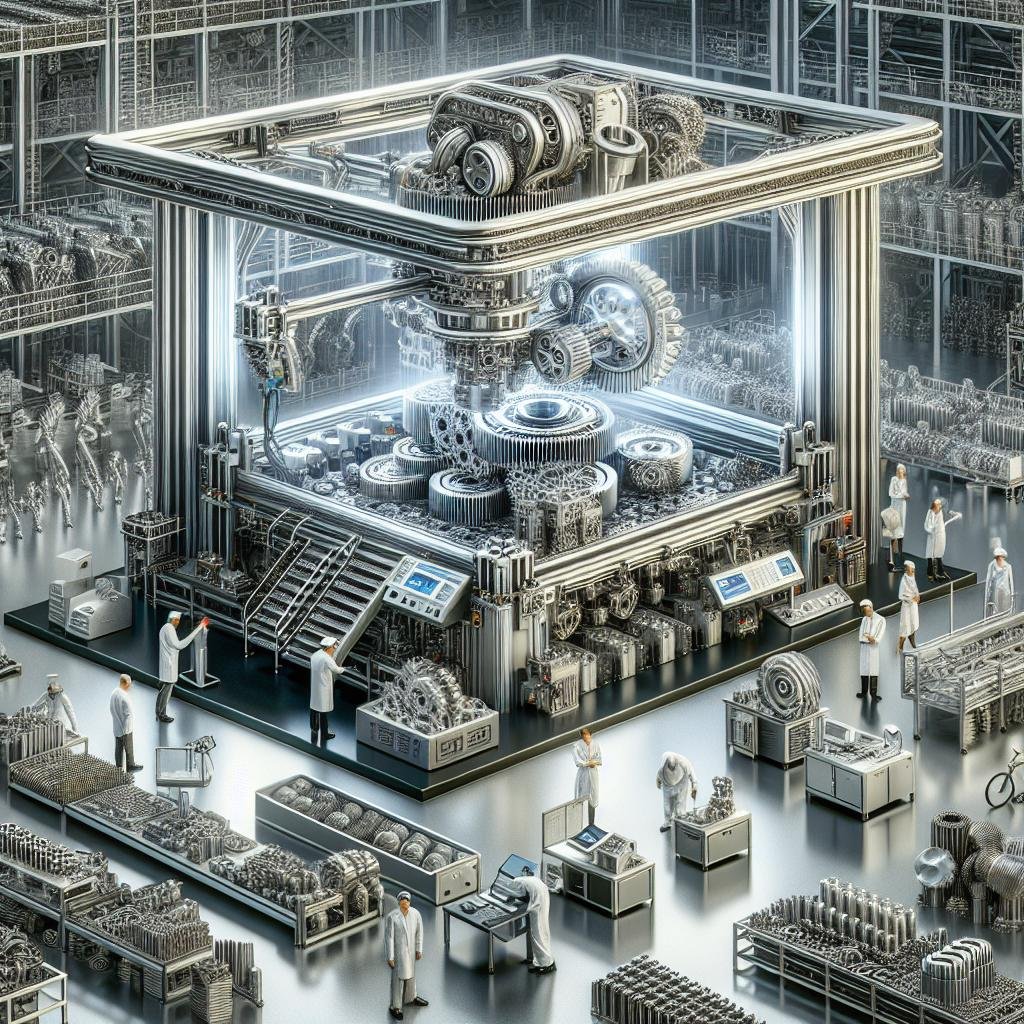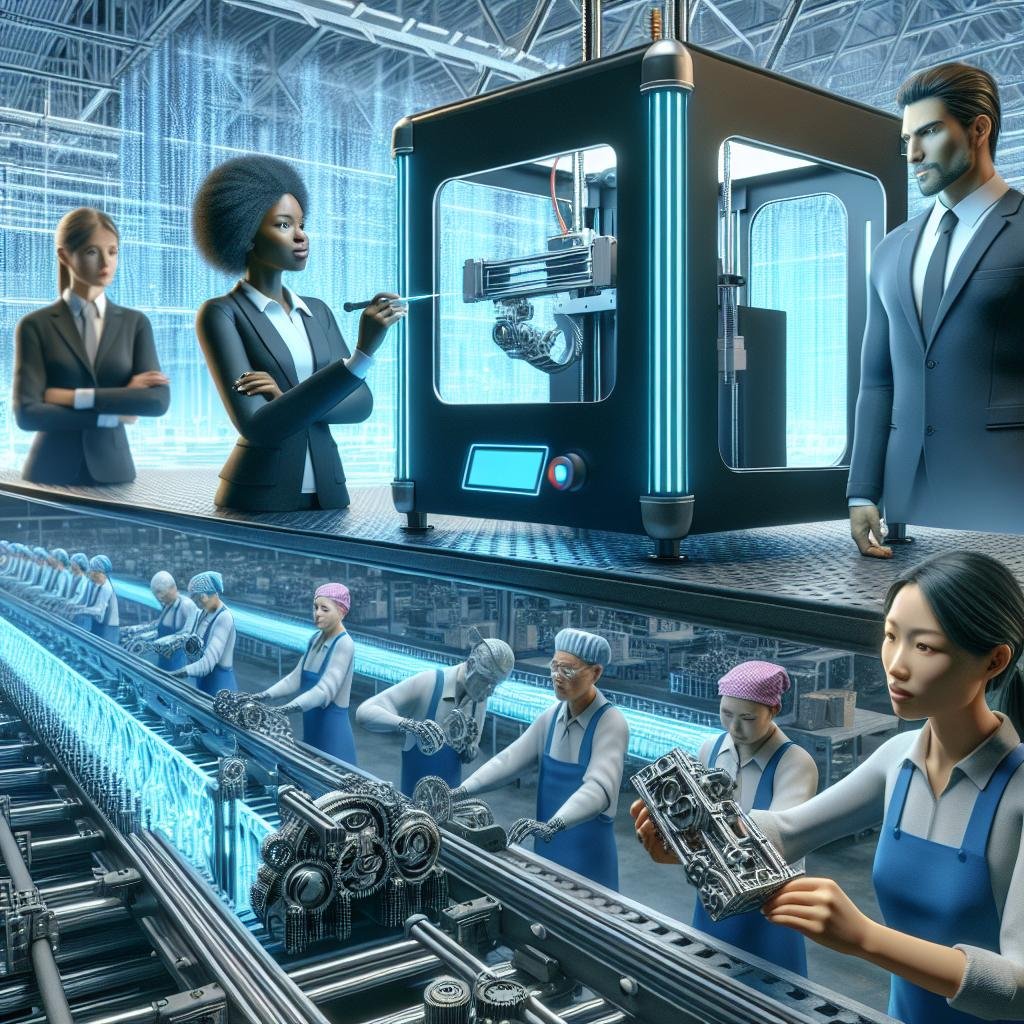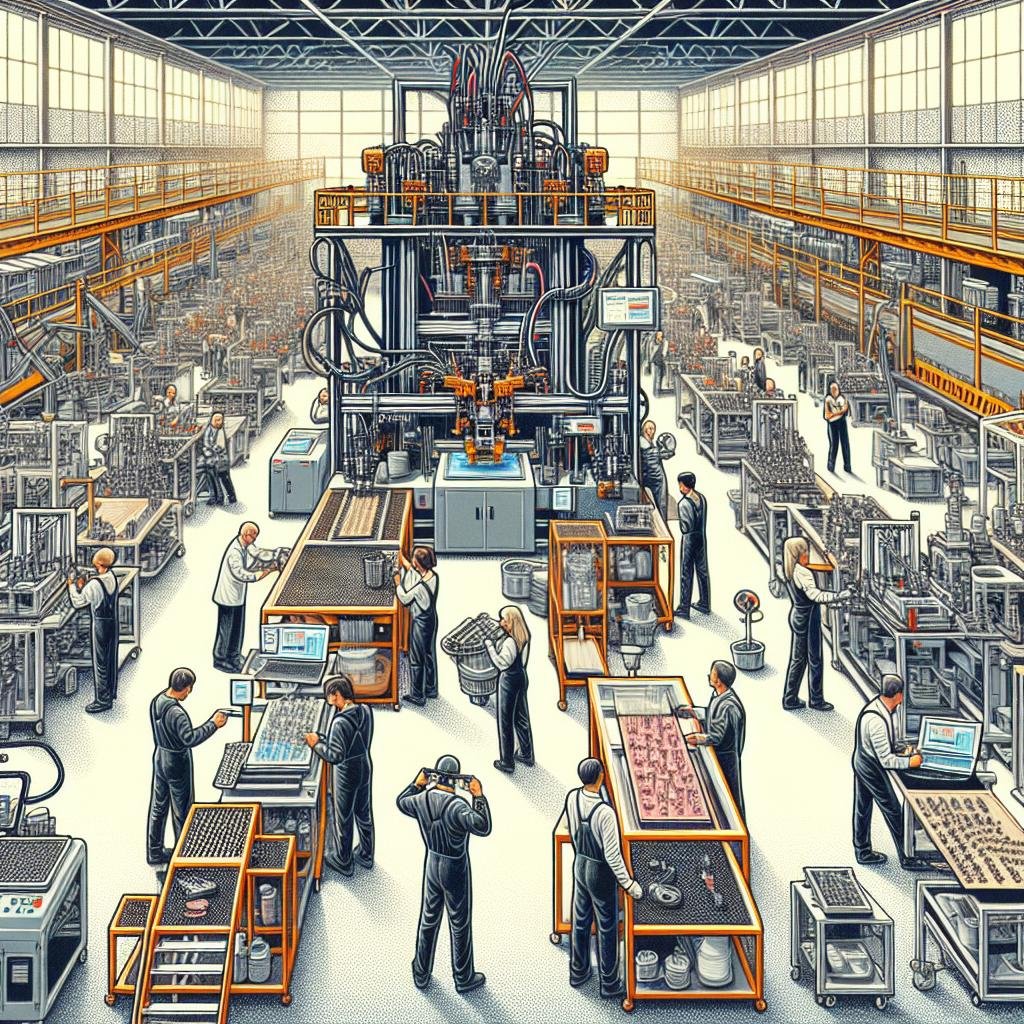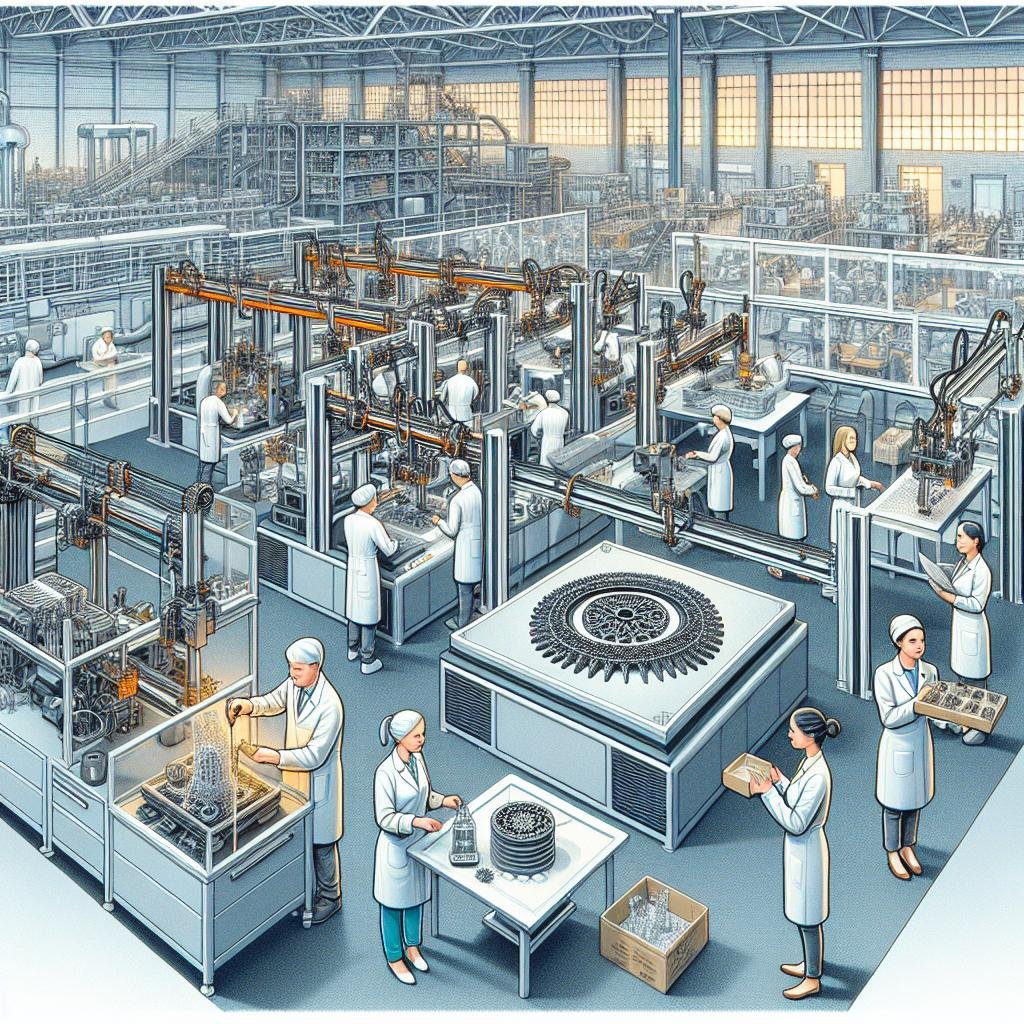In the ever-evolving landscape of technology, where innovation races ahead at lightning speed, one development has managed to capture the creativity of both dreamers and doers alike: 3D printing. Once the stuff of science fiction, these magical machines have swiftly graduated from the realm of hobbyists’ garages to become integral players in the bustling world of manufacturing. picture a robotics symphony where layers of sleek, shimmering materials come to life, transforming digital blueprints into tangible reality with the precision of an artist’s brush. In this article, we’ll delve into how 3D printing is not just impacting, but revolutionizing, the manufacturing sector. From reducing waste to fostering creativity and enabling customization like never before, this technology is turning the gears of production in ways that were once unimaginable. Join us as we explore this engaging journey and unravel the myriad ways in which 3D printing is reshaping the very fabric of manufacturing,one layer at a time.
Revolutionizing Production: How 3D Printing is Shaping the Future of Manufacturing
In the ever-evolving landscape of manufacturing, advancements in technology are continuously redefining the possibilities. At the forefront of this revolution is 3D printing, a disruptive force that is transforming traditional production methods into agile, customizable, and imaginative processes. With this innovative technology, manufacturers are witnessing a shift from mass production to mass customization. This means shorter lead times, reduced waste, and the ability to create complex geometries that once seemed impossible.By leveraging 3D printing, businesses are not only saving on material costs but also exploring uncharted territories in product design—offering personalized solutions that cater to the unique needs of individual consumers.
- Enhanced design versatility and complexity
- Meaningful cost reductions in prototyping
- Rapid iteration and time-to-market
- Decreased waste through efficient material use
- Facilitation of local, on-demand production
Furthermore, the integration of 3D printing into manufacturing processes fosters an ecosystem that encourages sustainable practices. By minimizing the need for extensive shipping and inventory costs, localizing production methods aligns with global sustainability goals. Companies are enabled to manufacture products closer to their customer base, creating not only economic but also environmental efficiency. To illustrate the impact, consider the following areas where 3D printing is making waves:
| Industry | Application |
|---|---|
| Automotive | Rapid prototyping for new models |
| Aerospace | Lightweight parts for fuel efficiency |
| Healthcare | Customized implants and prosthetics |
| Fashion | On-demand, personalized apparel |

Cutting-Edge Customization: Unlocking New Possibilities with Additive Manufacturing
in the vibrant realm of manufacturing, the advent of additive technology has initiated an era where personalization meets mass production. No longer are products constrained by traditional production limitations. 3D printing empowers manufacturers to bring bold designs to life with precision and speed. This technology allows the crafting of intricate geometries that were once deemed unfeasible, reshaping industries around the globe.Imagine a shoe designed specifically to fit the unique contours of an individual’s foot or a car part that perfectly integrates into a custom design, each piece meticulously crafted to fulfill specific requirements. This level of customization doesn’t just elevate user satisfaction; it also enhances product performance and durability.
The transformative power of 3D printing is also evident in the diversity of materials now in play. From lightweight metals to bio-materials,the range of printable substances continues to expand,thus unlocking an array of applications. Below are some materials currently making waves:
- Metals: Including titanium and aluminum, offering robust options for aerospace and automotive applications.
- Polymers: Widely used in consumer goods and electronics due to their versatility.
- Bioresins: Innovative materials crafted for sustainability in medical and dental fields.
| Material Type | Main Use |
|---|---|
| Metal Alloys | Aerospace Components |
| Carbon Fiber | Automotive Parts |
| Biodegradable Polymers | Eco-friendly Packaging |

Greener Pastures: The Sustainability Upside of 3D Printing in Factories
In an era where environmental concerns are more pressing than ever, 3D printing emerges as a pivotal ally in promoting sustainable practices within the manufacturing sector.by enabling the fabrication of products on-demand, this technology sharpens the focus on minimal waste generation. Traditional manufacturing often wrestles with excessive material usage, discarding significant amounts as scrap. In contrast, 3D printing’s additive process constructs items layer by meticulous layer, ensuring only the required material is utilized.This efficient method dramatically reduces waste and offers a cleaner alternative to subtractive manufacturing techniques.
- Reduction in material waste
- Energy efficiency improvements
- Localized production potential
Beyond waste minimization, 3D printing can considerably decarbonize the supply chain. by facilitating localized production, it shortens transport distances, thus slashing associated carbon emissions. This is notably impactful for custom or low-volume products. Factories using this technology can pivot to meet local demand, curtailing the need for cross-continental shipping. Furthermore, the burgeoning domain of sustainable materials in 3D printing introduces possibilities such as biodegradable plastics and recyclable inputs, offering eco-friendly alternatives to conventional raw materials.
| 3D Printing Benefit | Environmental Impact |
|---|---|
| On-Demand Production | Reduces Overproduction |
| Localized Manufacturing | Decreased Shipping Emissions |
| Use of Eco-materials | Supports Recycling Initiatives |

Adapting for Success: Strategic Recommendations for Embracing 3D Printing Technologies
In today’s rapidly evolving manufacturing landscape, integrating 3D printing technology necessitates a conscious shift in the strategic approach. Manufacturing leaders are encouraged to cultivate a culture open to innovation, where cross-disciplinary teams can work collaboratively to explore the expansive capabilities of 3D printing. This technology bridges the gap between technology and creativity,allowing designs that were once thought impossible to come to fruition. An emphasis should be placed on continuous learning and development to equip teams with the skills necessary to navigate this new terrain. Encouraging experimentation in design processes can lead to unforeseen innovations, driving the business forward with competitive advantages.
Successfully harnessing the potential of 3D printing also warrants a reevaluation of supply chain dynamics. Here’s a simple yet powerful framework for aligning 3D printing capabilities with business goals:
- Flexibility: Adopt flexible strategies that easily incorporate fast design modifications and customization options.
- Partnerships: Form strategic alliances with technology partners and hardware providers to leverage their expertise and infrastructure.
- Cost Efficiency: reassess cost structures to take advantage of reduced material use and shorter production cycles.
| Aspect | Traditional Manufacturing | 3D printing |
|---|---|---|
| Lead Time | Weeks to Months | Days to Weeks |
| Customization | Limited | Highly Flexible |
| Waste Management | High Material Waste | Minimal Waste |
These recommendations, when implemented thoughtfully, can serve as a vital blueprint for weaving 3D printing into the very fabric of a company’s operations, ensuring the sustainability and growth of its innovation potential.
Q&A
Title: Unpacking the Future: The Impact of 3D Printing on the Manufacturing Sector
Q1: What exactly is 3D printing, and why is it such a game-changer in manufacturing?
A1: Great question! Imagine making a physical object by printing it layer by layer, much like building with LEGO bricks, but with more precision and complexity. That’s 3D printing in a nutshell. It’s a game-changer because it allows manufacturers to produce complex designs with fewer resources, reducing waste and enabling on-demand production. This flexibility opens doors to innovation and customization that traditional manufacturing just can’t provide as efficiently.
Q2: How is 3D printing impacting the timeframe of production cycles?
A2: think of 3D printing as a way to fast-forward through the slow parts of traditional production. By eliminating the need for creating molds or tooling, 3D printing drastically cuts down setup and changeover times. This means products can go from concept to physical item much quicker, speeding up prototyping, reducing lead times, and getting products to market faster. In short, it’s like putting manufacturing on the fast track.
Q3: What are some examples of industries that are being transformed by 3D printing?
A3: If industries were a buffet, 3D printing is the all-you-can-eat pass. From healthcare, where it’s used to print custom prosthetics and even bioprint tissues, to aerospace, where lightweight and complex parts are essential, 3D printing is leaving its mark. The automotive industry,consumer goods,and even fashion are exploring new potentials with this technology. It’s not just about making things differently, but making different things altogether.
Q4: Are there any significant challenges or limitations associated with 3D printing in manufacturing?
A4: Absolutely, like any revolutionary tech, it has its quirks. One of the main challenges is the speed; while it’s faster for prototyping,3D printing can be slower for mass production compared to traditional methods. The cost of high-quality materials and machines can be significant, too. Additionally, there’s a learning curve in mastering the design software and technology. But the industry is rapidly evolving, with solutions and improvements coming out regularly.
Q5: How dose 3D printing contribute to sustainability in manufacturing?
A5: Sustainability is the cherry on top of the 3D printing cake. By producing items on-demand and reducing excess inventory, it helps cut down on waste. Moreover, 3D printing is energy-efficient and requires fewer raw materials, and its precision reduces material wastage. Plus, the possibility of using recycled materials in printing further shrinks its environmental footprint. It’s like giving Mother Earth a much-needed break!
Q6: What should businesses consider before adopting 3D printing technology?
A6: Businesses should start by understanding their unique needs and how 3D printing can enhance or complement their operations. It’s essential to evaluate costs, potential return on investment, and the availability of skills and resources.Investing in training and understanding the evolving intellectual property laws around 3D printing is also crucial.A thoughtful approach will ensure that the leap into the world of 3D printing is both beneficial and strategic.
Q7: What does the future hold for 3D printing in manufacturing?
A7: The future looks brighter than a sunny-side-up breakfast! As technology advances, we can expect faster print speeds, broader material options, and even more precision. The integration of AI could lead to smarter printers that can optimize their processes in real-time. In the long run, distributed manufacturing and local production could become more mainstream, reducing global supply chain dependencies. The best part? We’re only scratching the surface of possibilities.
Let’s embrace the era of 3D printing—a time when printing isn’t just for paper anymore!
The Conclusion
As we draw the curtain on our exploration of the impact of 3D printing on the manufacturing sector,let’s take a moment to appreciate just how transformative this technology truly is. From reimagining the creation of intricate designs to nurturing a spirit of innovation and sustainability,3D printing is not just altering the manufacturing landscape—it’s revolutionizing it.
This technological marvel,while still evolving,beckons us toward a future brimming with possibilities where customization is king,and the boundary between imagination and reality grows ever thinner. As manufacturers adapt and consumers dream, we stand on the precipice of a new industrial era, one that marries the precision of technology with the boundless potential of human creativity.
so, whether you’re a maker, a thinker, or simply an enthusiast, prepare to witness a world where ideas leap from minds to machines with astonishing ease. And remember, in the realm of 3D printing, the only limit is how far you’re willing to dare. Until next time, keep dreaming big and printing bold!

